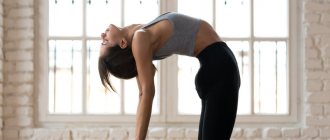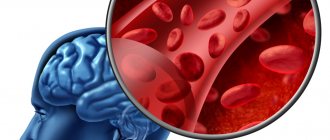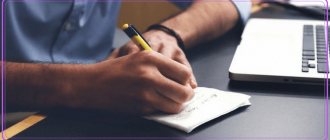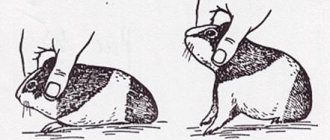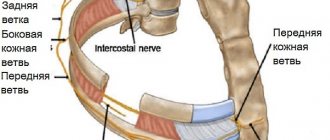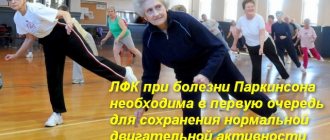Stress accumulated during the working day manifests itself physically in the form of illnesses and ailments. You come home after work and your to-do list never ends. Very little time for self-care. But what if you set aside a little time every day for health and well-being? Sometimes it's important to focus on yourself. This will significantly reduce stress, prevent disease and slow down the aging process.
Try these yoga poses - they are simple, but after regular practice, the results will pleasantly surprise you. Stress levels will decrease, body flexibility will improve, and along with flexibility will come a feeling of well-being and inner peace.
Mountain Pose (Tadasana)
This pose is one of the simplest, but it is not immediately possible to perform it perfectly.
Technique: stand straight, feet firmly on the floor, spread your toes wider. Legs, feet, ankles are connected. Tighten your buttocks so that your pelvis is over your feet. Tuck your stomach in and roll your shoulders back and down. Hands are lowered down with palms facing out. Close your eyes and stay in the pose for 5 to 10 breaths.
Yoga exercises to relieve stress
What yoga poses help relieve stress? First of all, those that calm the adrenal cortex and have a beneficial effect on the nervous system. Among them are forward bends in different variations, light twists, balances and relaxation asanas.
Garudasana
(eagle pose) – its anti-stress effect lies in balance and rebooting of the circulatory system, which occurs due to twisting of the limbs and further relaxation. Garudasana requires deep concentration, making it difficult for the body and mind to do anything other than focus on the present moment.
Start performing Garudasana from Tadasana. Slowly lift your right leg and cross it over your left. Then cross your left hand over your right and begin to bend your elbows, connecting the back of your hands. Garudasana can always be deepened by twisting the arms and legs deeper. Find a position in which you can maintain balance and breathing.
This pose is not only good for relieving stress, it helps to open and lengthen the shoulders and hips - these are the areas of the body that are most affected by emotions and experiences. Do Garudasana on both sides. Stay on each side for at least 5-7 breaths.
Uttanasana
(extension pose) – bending forward. Yoga for beginners under stress is rarely complete without this asana, which can be performed in different variations.
Start with deep breathing. Then slowly, while continuing to breathe, go into an incline. When the head drops below the level of the heart, the heartbeat will slow down and the mind will begin to calm down.
The arms hang freely along the body or you can use an elbow grip. Uttanasana is one of the best poses that can quickly relieve an acute reaction to stress. Stay in the asana for up to 10 deep breaths.
Paschimottanasana
(posterior stretching pose) is a variant of bending forward from a sitting position. Sit on the mat, stretch your legs and lift your feet up. Raise your arms up and, maintaining extension, smoothly lower your body to your feet.
At the same time, it is important not to round the back, but to keep it straight, which will ensure maximum extension of the spine from the sacrum. If you cannot yet place your stomach and chest on your hips, you can bend your knees. Stay in the asana for 10-15 breaths.
Marjariasana
(Cat Pose) is a short, dynamic sequence in which the body moves from a downward to an upward spinal position. Marjariasana gives relief to the spine and all back muscles, helps stabilize breathing during movement, which calms the mind.
To perform Marjariasana, kneel and place your hands on the mat. Palms should be placed under the shoulders, knees under the hips. As you inhale, push your chest forward and lift your head up.
The back in this position will be in a deflection. Keep your stomach engaged. As you exhale, lift your upper, middle, and lower spine and begin to lengthen the crown of your head toward the floor. Move with the flow, arching and rounding your back.
Balasana
(child's pose) is one of the best asanas that brings relaxation and peace. The big advantage of Balasana is that it does not require special adjustments, and it is accessible to those who are taking their first steps in yoga.
Sit on your heels and lean forward, lowering your body onto your hips. Move your arms back if you want to achieve complete relaxation of your back muscles. When you stretch your arms forward, your back will also be in a stretched position.
In Balasana, the head is lowered onto the mat, but if you have a headache, you can put a rolled up blanket or block under your head so as not to lower it too low.
Forward Bend (Uttanasana)
This pose causes a rush of blood to the spine and head.
Technique: From a standing position, fold forward and reach your hands to your feet or ankles, or, if you find it difficult, to your hips or knees. Relax. Allow your lower back to lengthen and the crown of your head to hang towards the floor. The neck and shoulders are completely relaxed. Breathe deeply, and with each exhalation, pull your stomach towards your knees. Stay in the pose for 5 to 10 deep breaths.
Child's Pose (Balasana)
Another name for the popular anti-stress asana is the fetal pose. Balasana is one of the most famous and accessible yoga exercises for relieving fatigue and stress.
This passive asana calms the mind, relieves lower back pain, restores strength, balances breathing and eliminates haste.
It is indicated for people with spinal curvatures, hernias and protrusions. The steps to perform the exercise are simple:
- kneel down and place your buttocks on your heels;
- with an exhalation, lower your arms along the body or stretch them in front of you;
- lean forward, touching your forehead to the floor;
- hold the position for more than twenty seconds;
- return to the original stance;
- repeat the asana 10-20 times.
Pigeon Pose (Eka pada rajakapotasana)
The pose is a great stretch for the hip joints, and is perfect for those who spend all day sitting at a desk or driving for several hours. The front of the thigh, back and hip extensors are stretched. If your back is not strong enough to stay in the position for more than a breath or two, don't be discouraged. Practice, and over time it will become easier for you to remain in this position.
Technique: Start sitting with one knee on the mat at a 90-degree angle. The second leg is straight and remains behind. If necessary, use a block under the hips. This will relieve some of the pressure and make balancing easier until flexibility improves. Mentally stretch from your lower back to the ceiling. Hold the pose for 5 to 10 breaths on each side and gradually increase the duration. Repeat on both sides.
Yoga against stress
There are a variety of practices, styles and directions in yoga. How to choose exactly what will relieve stress, help stabilize the emotional background and lead to harmony?
First of all, focus on working with the physical body. By loosening your muscles and joints on the mat, working with blocks and clamps, you improve your overall well-being, normalize your hormonal levels and improve the flow of energy. You can work out your physical body in Hatha Yoga, Vinyasa Flow Yoga, Ashtanga Vinyasa Yoga, Iyengar Yoga and a number of other areas.
Yoga for relaxation, relieving fatigue and stress is always an individual approach to stress. Therefore, do not try to immediately get into an advanced class or perform complex asanas. Otherwise, you can get injured, which will only aggravate the stressful condition. Approach the practice wisely and do not forget the principle of ahimsa (non-violence) in relation to your body.
For successful practice in different schools of yoga, it is recommended to first study the principles of yama and niyama, and then move on to performing asanas. In any case, even the simplest practice for beginners, consisting of basic aces, can relieve fatigue and stress.
If hatha yoga is based on the principles of eight-step yoga, such a practice will benefit not only you personally, but also the world around you.
Reclining Pigeon Pose (Eka Pada Rajakapotasana)
Deeply bending pigeon pose requires less effort and is more relaxing. Stay in it longer and breathe. The asana releases stress and tension in the hips and increases flexibility.
Technique: Start in the same position as pigeon pose and slowly lower yourself onto your palms or forearms onto the floor. If it becomes easy, fold your hands on top of each other and rest your forehead on your hands. Stay in this position for 5 to 10 breaths. Repeat on both sides.
Cobra pose (bhunjangasana)
This pose strengthens the back, opens the shoulders, chest, and strengthens the muscles along the spine.
Technique: from a prone position on your stomach, both palms under your shoulders, fingers spread wide, pelvis pressed against the mat, push off the floor with your hands and lift your chest up. Pull your shoulders away from your ears, lengthening your neck. Look up a little. Take a few breaths and slowly lower yourself to the starting position.
Cobra Pose (Bhujangasana)
This popular exercise has been famous since ancient times for its ability to eliminate loss of strength. The latest research has proven its influence on hormonal levels.
It has been experimentally proven that performing the asana causes a decrease in the production of stress hormones and an increase in testosterone levels.
In addition, this position strengthens muscles, relieves general fatigue, tones, develops flexibility of the spine, actively stimulates the functioning of internal organs and normalizes blood circulation. The steps of the exercise are simple:
- lie on the floor with your face facing down;
- stretch your legs;
- lean your palms on the floor, placing them under your shoulders;
- lift your chest as high as possible;
- repeat the sequence at least five times.
Contraindications for performing the exercise: menstruation, acute radiculitis, pathological lordosis, pregnancy and spinal injuries.
Cow Head Pose (Gomukhasana)
Crossing your hips is not as easy as it seems. For those who find this pose difficult, use a pillow or rolled up blanket and place it under your hips.
Technique: Place your left leg on top of your right, cross your knees, and sit between your legs. You need to sit with your back straight. Place your right hand back, behind your head, and your left hand back, below, and clasp your hands together. Hold the pose for up to 10 exhalations on each side.
Reclining Pigeon Pose
Supta Kapotasana
It will be especially useful to perform the pigeon pose while lying down after you have had to spend a lot of time in a sitting position. Do this asana when you come home after school and you will feel how well your thigh muscles stretch.
- After doing Happy Child Pose, extend your legs and place them on the mat. Bend your knees and pull your heels a few centimeters away from your pelvis.
- Raise your right leg and place your right shin just below your left knee.
- As you inhale, stretch your hands to your left shin: pass your right hand under your right leg, place your left hand on the outside of your left shin. Lock your fingers.
- As you exhale, gently pull your left leg towards you. Feel the muscles stretch.
- Relax your neck, press your shoulders into the mat. Gently move your right knee away from you.
Wide Leg Forward Bend (Prasarita Padottanasana)
Sometimes simply bending forward can be challenging for those with tight hips and hamstrings.
Technique: Spread your legs as wide as you can. Place your palms between your legs and slowly step them forward until your elbows touch the floor. Breathe deeply, consciously relaxing tense areas. Hold the pose for 5 to 10 breaths and gradually increase the time you stay in the pose. The more you hold this pose, the faster you will see progress.
Tilt to straight legs
Paschimottanasana
The deep bend to extended legs is a great stretch for the arms, legs and back. And if you hold this pose with your eyes closed, it will also calm your nerves.
- After performing the deadbolt pose, sit on the mat with your legs extended in front of you.
- Bring your legs together and stretch them. Work your muscles, pulling your kneecaps towards your hips.
- As you inhale, extend your arms up toward the ceiling. Straighten your back, stretch the top of your head up.
- As you exhale, reach your hands to the outside of your shins, ankles, or feet. If this is too difficult for you, bend your knees slightly.
- Try to reach the top of your head towards your toes.
- Take a few deep breaths in and out.
If this stretching seems insufficient to you, you can complicate the pose: try to clasp your feet with your hands. And if this is not enough, try to lower your elbows to the floor. Don't forget: there shouldn't be any pain!
King of the Fishes Pose (Ardha Matsyendrasana)
To completely relax and relieve stress before completing your session, include a seated twist in your practice. It stretches the muscles of the lower back, hips, buttocks and spine.
Technique: sit on the floor, place both legs in front of you, bend your left leg at the knee and cross it over your right, so that your foot is on the floor near your right thigh. Then turn your body to the left. Inhale and join your palms in namaste. Hold the pose for three to five breaths. Repeat on the other side.
↑ How does yoga affect your mental state?
Various reasons can affect a person’s psycho-emotional state. And the psyche already affects the body. Quite often, mental illness can be triggered by the presence of diseases of internal organs. As a result, muscle tension appears. Scientists of Ancient China believed that a person has a certain number of chakras, and each of them is responsible for certain functions. They are the ones who influence the capabilities and aspirations, therefore, if one of them is blocked, the work of the entire organism can be disrupted.
Yoga is a technique that helps a person cope with stress and depression. Its main advantage is that treatment begins with the elimination of symptoms. Any exercise affects the entire body. Gymnastics improves metabolic processes. And when performing the asana, internal tissues and organs are massaged. Therefore, it helps to completely relax, relieve tension and improve the flexibility of the body.
Attention! The results from the classes appear gradually, and at the same time the emotional state begins to improve.
Most often, during exercise, a person experiences pain, which is soon replaced by different emotions. It could be happiness, crying, anger, irritability. This indicates that the asana affected the most painful organ. This state indicates that the pain is gradually receding, and Kundalini, which is what energy is called in practice, enters the organ. However, soon all his complexes and grievances towards others return to the person, since all this is embedded in the subconscious and has accumulated there for many years.
Some people immediately want to quit using this method. However, you shouldn't do this. At such a moment, you need to look at yourself from the outside, and maybe the pictures that led to this ailment will emerge in your subconscious. Also, if desired, you can practice only that type of yoga that is aimed at working with the human subconscious.
With systematic training, the result will not take long to arrive. After a certain amount of time, the student will see that he is turning into a more self-confident person. It will become easier for him to communicate with strangers, awkwardness and embarrassment will go away. This allows many people to achieve success in their careers. It turns out that yoga for relaxation, relieving fatigue and stress is the most effective way.
Contented Child's Pose (Ananda Balasana)
This pose completely relaxes the back and pelvis.
Technique: lie on your back, pull your knees to your chest, grab yourself by your big toes, while keeping your pelvis on the mat. Try to pull your knees towards your armpits. Feel the stretch in your groin area. This pose perfectly relaxes, relieves stress and tension. Hold for 5 to 10 breaths.
Lying Twist Pose (Supta Matsyendrasana)
The purpose of this pose is to release tension in the spine.
Technique: lying on your back, with a deep breath, lift your knee to your chest and move it in the opposite direction. (if left, then to the right, if right, then to the left). Do not lift your shoulders off the floor, keep your hands free. Release any tension, feel your body open and free. Repeat on the other side.
Knee press
The pose stretches the back and relieves tension.
Technique: Lie on your back with your arms and legs extended. As you inhale, pull your knees to your chest and hug them with your arms. Keep your back straight and rock gently from side to side and back and forth. The chin is pressed towards the chest to align the neck. Exhale and gently lower your feet to the floor.
A set of yoga exercises before bed
Below we will present a set of asanas that will help your body relax and easily fall into a sound sleep. Remember that breathing is one of the most important therapeutic aspects of yoga. Your goal during each exercise is to focus on your breathing to take your mind off your thoughts and into a sense of yourself.
Lotus Pose (Padmasana)
When starting to practice, the first thing you should do is completely relax your mind. You can distract yourself from obsessive thoughts with the help of one of the fundamental asanas - the lotus pose.
To perform this exercise, you need to sit on the floor (you can use a yoga mat) or on a bed with a hard mattress, crossing your legs. If it is still difficult for you to keep your back straight, lean against the wall or headboard of the bed. The pose should not cause discomfort in the body and muscles.
Close your eyes and spend a few minutes breathing, concentrating on inhaling and exhaling. To perform the asana correctly, breathing should be smooth, only through the nose. To even out your breathing, try to spend at least 4 seconds inhaling and exhaling, and take a short pause between them.
Twisting (Ardha matsyendrasana)
From the lotus position, we smoothly place our right leg behind the left knee and turn our body to the right. We place our left hand on our right leg, trying to turn our body as much as possible. We turn our head following the right hand. Then we smoothly return to the starting position and repeat the same in the other direction, changing the position of the arms and legs according to the asana.
This exercise helps the long back muscles relax after a long day at work.
Watch your breathing, trying to synchronize it with every action.
Bend to the feet (Paschimottanasana)
To perform this asana, you should sit up straight, straighten your legs in front of you, keep your back straight, and straighten your arms along your body. Then take a deep breath, while raising your arms up through your sides and lengthening your spine. As you exhale, slowly lower your body towards your feet. It is important to aim for your legs with your stomach, not your shoulders.
You should stay in this pose for 4 seconds and slowly return to the starting position.
This exercise helps relieve stress and internal tension, clearing the mind of negative thoughts.
Knees to chest, alternately and together (Apanasana)
Another exercise to relieve tension in the long back muscles, which are subject to heavy loads throughout the day, and also to relax the hips. To perform the exercise, you need to lie on your back and, while inhaling, bring one knee to your stomach. Hold the pose for a few seconds, then straighten your leg and repeat the asana with the other leg. Repeat changing legs a couple of times.
Then, in the starting position lying down, bring both legs to your stomach, clasping them with your hands, but do this while exhaling. As you inhale, loosen your grip slightly without straightening your legs. We fix the position and do several cycles to even out breathing. At the end of the exercise, you can sway a little from side to side, and then slowly straighten your legs.
Butterfly Pose (Supta Baddha Konasana)
Lying on your back, inhale and slowly move both hands behind your head. Pull your legs towards your pelvis, spreading your knees to the sides and keeping your feet together. Fix the position and perform several full breathing cycles. After completing this part of the exercise, first slowly return your arms to the starting position, then bring your legs together with your hands. Afterwards, we close our eyes and slowly turn onto our left side, stay in this position for 10 seconds and slowly rise up.
Child's Pose (Balasana)
This asana will help relieve fatigue and relax the muscles, which is necessary for sound sleep. To perform this exercise, sit on your knees with your thighs and feet pressed together. Bend your body forward so that your forehead touches the floor. Place your arms behind your body and place them along your body, palms up. Close your eyes and focus on your breathing cycles for a few minutes while holding the pose.
Contented Child's Pose (Ananda Balasana)
To perform the exercise, you need to lie on your back, bend your knees and bring them to your chest, grab your big toes with your hands and slightly spread your knees to the sides so that they are level with the armpits. The tailbone should be pressed to the floor. To relieve tension, you can rock back and forth a little: this movement imitates a massage of the spine and relieves tension from the back.
Lying Butterfly Pose
The asana stretches the inner thighs and groin. Increases blood flow into the pelvis.
Technique: Lie on your back with your legs and arms straight. Bend your knees and spread them apart. Feet together. Place your hands on your knees, palms up. Adjust your spine by lengthening it while maintaining the natural curve of your lower back. Close your eyes. Breathe naturally. Stay in the pose for 5 to 10 minutes. To exit the pose, bring your knees together and place your feet on the floor.
A gentle set of asanas to calm the nervous system
We can already rely on scientific research and say that regular yoga practice calms and has a positive effect on the human nervous system.
This gentle sequence of asanas will help relieve tension, improve blood circulation and establish proper functioning of the sympathetic nervous system. Incorporate these poses into your practice or repeat the sequence separately every day:
Supta Padangusthasana
The pose balances the work of the right and left hemispheres of the brain, strengthens the legs and stretches their back surface. Deepen your breathing in the asana and press your back tightly to the floor.
Lie down on the mat. Stretch your legs, lift your right leg up, grab your shin with your hands. As you exhale, pull your leg towards you. Breathe, allow your muscles to relax and pull your leg even closer. Hold for 5-10 breaths. Perform the asana on the other leg.
Bitilasana-Marjariasana
The simplest asanas are often the most effective. This set of asanas tones the back and abdominal muscles and activates the nerve connections of the spine. Gives strength and increases energy.
Get on your knees with your palms under your shoulders. As you inhale, arch your back, opening your chest and shoulders. Point your head up. As you exhale, round your back as much as possible, pull in your stomach and pull your head towards the floor. Perform 5-8 repetitions of the asana.
Bhujangasana
The asana tones the nervous system, activates the adrenal glands, strengthens the muscles of the back, buttocks and abdomen.
Lie on your stomach. Place your palms in front of you. Lift up, pull your ribs and upper abdomen out from under you. Straighten your arms, lift your body up, opening your chest. Tighten your buttock muscles, tighten your stomach. Hold for 5 breaths and perform the pose several times.
Anjaneyasana
The pose calms strong emotions, increases vital energy, and harmonizes the right and left sides of the body.
From Adho Mukha Svanasana, place your right foot forward between your palms. Lower your left knee to the floor. Behind your hands, lift your body up, join your palms, stretch your back. The gaze is directed forward.
Open your chest, try to lower your pelvis even lower. Hold for 5 breaths and perform the asana on the other side.
Padahastasana
The asana relieves negative thoughts and emotions, calms and relaxes. Improves cerebral circulation and has a rejuvenating effect.
Stand up straight. Straighten your back, as you exhale, bend towards your legs, place your palms under your feet. Pull your forehead towards your knees, straighten your legs, but do not round your back. Hold for 5-8 breaths.
Finish the practice with Savasana for 5 minutes. Observe how your emotional state has changed after the lesson.
Legs up against the wall (Viparita Karani)
The pose stretches the back of the legs and calms the mind. Like all inverted poses, this asana has a rejuvenating effect. It also reduces anxiety, headaches, insomnia and depression.
Technique: Place a cushion or pillow against the wall. Then carefully lift your legs up onto the wall. Shoulders and head on the floor. Hold the pose for 5 to 10 minutes.

